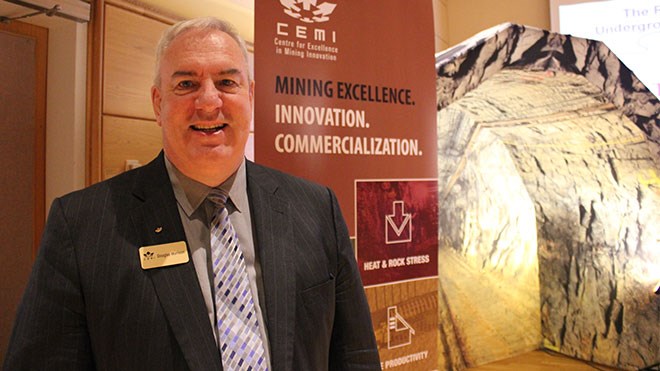The Canada Mining Innovation Council and the Centre for Excellence in Mining Innovation submission to the federal government’s Innovation Superclusters Initiative has survived the latest round of cuts.
This week, the federal government narrowed down to nine the candidates for $950 million in funding for supercluster sites, out of 50 proposals. The government hopes to create dense business areas with the initiative where large and small companies can collaborate with research institutes and organizations to commercialize ideas.
The mining proposal, released in July, has both groups working on behalf of the mining industry to propose a clean resources supercluster called CLEER (clean, low-energy, effective, engaged and remediated).
“This CLEER supercluster will transform the mining sector’s productivity, performance, and competitiveness,” a news release on the plan said. “This will be achieved by tackling global challenges of water, energy, and environmental footprint, with bold targets of 50 per cent reduction in each area by 2027.
“CLEER will engage the mining services and supply sector and anchor mining companies, accelerate collaborative innovation, stimulate investments exceeding $5B, with the objective of growing (small- and medium-sized businesses), improving industry productivity, initiating export pathways, and creating more than 100,000 jobs.”
Innovation, Science and Economic Development Minister Navdeep Bains, launched the application process in May. The 2017 federal budget made $950 million available over five years to support a small number of business-led innovation superclusters that have the greatest potential to accelerate economic growth.
“If successful in the application process, this CLEER Supercluster will position Canada as a global leader in both clean resources and clean technology development, as well as in the responsible sourcing of metals,” the release said. “This is essential for clean growth, given that the Canadian mining sector is a key global provider of the raw materials used as inputs for the development of clean technologies, including for the clean energy transition (e.g. solar panels, battery electric vehicles, SMART grids, and wind turbines).
Douglas Morrison, president and CEO of the Centre for Excellence in Mining Innovation (CEMI), said the supercluster is key for ensuring the long-term growth of mining in Canada.
“Canada needs to sustain its existing mines and open new mines by improving productivity and ROI,” Morrison is quoted as saying in the release. “We believe that CLEER Innovation Supercluster will position the Canadian Mining Industry as the global leader in accelerating the commercialization and adoption of step-change innovation nationally and internationally.”
The proposed supercluster is an industry-led consortium that includes of four existing clusters representing an eight companies, 12 post-secondary institutions, 42 small- and medium-sized businesses and 25 other support organizations.
To date, the initiative has attracted a total investment of $376 million of cash and in-kind contributions and is seeking $185 million from the federal government.
“True innovation is about transformation and asking tough, uncomfortable questions.,” Carl Weatherell, executive director of the Canada Mining Innovation Council,” said in the release. “CLEER challenges the very notion of superclusters offering an innovative approach positioning the mining sector to take global leadership roles on three fronts.”
Pierre Gratton, president and CEO of the Mining Association of Canada, said in a news release that “we are thrilled that the CLEER project is advancing to the next stage and appreciate the government’s recognition of its significant potential. We believe that this project can help Canada become the leading supplier of the sustainably-sourced minerals and metals the world needs in a low carbon future, as well as the technologies the world needs to best extract them.”
For information on all nine finalists, go here.
